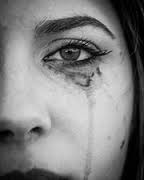A fairly consistent response to Moraga’s The Hungry Woman has been an exploration of the feminist perspective through which the classic Chicano legend of La Llorona is told in combination with the Greek mythology of Madea. A focal point of class discussion was how one should approach the character of Madea that Moraga presents, whether it be with pity, sympathy, or judgment. Some believed, including myself, that Madea’s downfall was her own greed and stubbornness and that her own vices forced her into the position we find her in at the end of the play. While Moraga’s version of these legends adds a new psychoanalytic perspective into the mind of this classic character, I found myself much more understanding and sympathizing with the character of Madea after reading Moraga’s essay “Looking for the Insatiable Woman.”
Moraga writes her essay in the thick of constructing her La Llorona story, impeded by her search for the “insatiable woman.” She begins her essay by explaining how she came to be exposed to the story of La Llorona, but not in the traditional sense. A frequent patron to the restaurant where she waitressed and a fellow feminist activist in the lesbian community, told her the story of a pair of lesbian lovers, who in a drunk and crazed fight threw their two children off of a cliff in rural Oregon. The biological mother, however, was acquitted of the charge while her lover was thrown in prison, each time denied parole by public pressure to keep the “lesbian child-killer” behind bars. This story spurred her need to find the truth behind the woman of La Llorna and fostered her “desire to kill patriarchal motherhood” (Moraga). The hungry woman portrayed in Moraga’s play is a product of her desire to create a character representative of every Chicano women, regardless of sexuality. A woman that has been oppressed throughout her entire history by masculine confinements. If we understand Moraga’s version of La Llorona through the lens of a woman working to instill a flame of insurrection within a generation of female Chicana art, I believe we can lend more sympathy to the character of Madea she constructs. One can see her, not as a greedy woman who’s crime against her son was fueled only by a desire to keep her land, but as a woman forced into a position by the patriarchal patterns of history and must take a desperate stand to liberate herself. Needless to say, the hungry woman represents an extremely feminist ideal, but with the added knowledge of the authors intentions in making her so rebellious, it allows the reader to look upon her actions as an attempt at liberation for a whole generation and culture of women.
Works cited: Moraga, Cherrie L. “Looking for the Insatiable Woman.” South End Press. Cambridge, USA, 2000.

